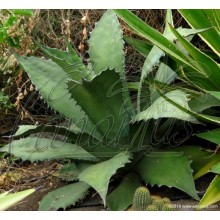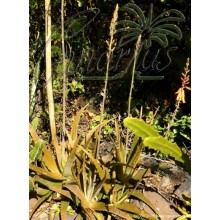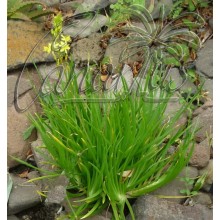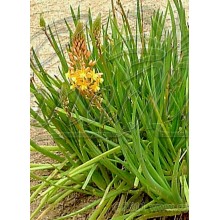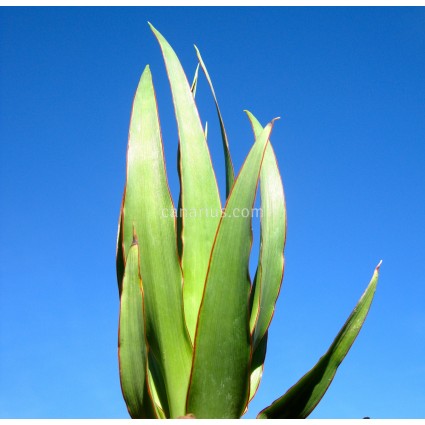 Agrandir l'image
Agrandir l'image
Dracaena draco ssp. ajgal
This is the new "Dragon Tree" from Morocco, discovered a few years ago in the SW Atlas mountains. It is a tall, long-lived succulent tree. It grows much like the more common Canarian subspecies, with some differences. Being an inland subspecies, it is possibly more hardy to cold!
Nouveau
This is the new "Dragon Tree" from Morocco, discovered a few years ago in the SW Atlas mountains. It is a tall, long-lived succulent tree. It grows much like the more common Canarian subspecies, with some differences. Dracaena Draco has thick, shiny grey-brown trunks. Older specimens are spectacular as they branch and form thick aerial roots. Mature plants achieve 5-18 m, according to growing conditions. Leaves are simple, strap-like, glaucous-green, inflorescences are creamy white, followed by bright orange fruits. It is damaged by frost but it does well in cool conditions. This is an inland subspecies, it is possibly more hardy to cold!
Large, old specimens of the Canarian form can be seen on the warmer coasts of the Mediterranean. It is also good in large pots and makes a beautiful patio plant that can be brought indoors during the coldest months. Wounded stems secrete a dark red resin which is the famous "dragon's blood" of the past. It is not only native to the Canary Islands, but also found in Madeira, Cape Verde and Morocco, where this different subspecies grows on the Atlas mountains, recently described as Dracaena draco ssp. ajgal.
The size of this plant is: h= 18-30 cm
| Cultivation | Protégée |
| Origine de la plante | Afrique |
| Présentation | Racine nue |
| Taille max. | 300cm et plus |
| Famille botanique | Asparagaceae |
| Lumière | Soleil |
| Saison de floraison | Mois les plus froids |
| Type de plante | Ligneuses |
| Couleur | Vert |
| Couleur | Orange |
| Soins | Pot |
| Forme | Succulentes |
| Forme | Arbres |
| Forme | Palmiers et similaires |

















